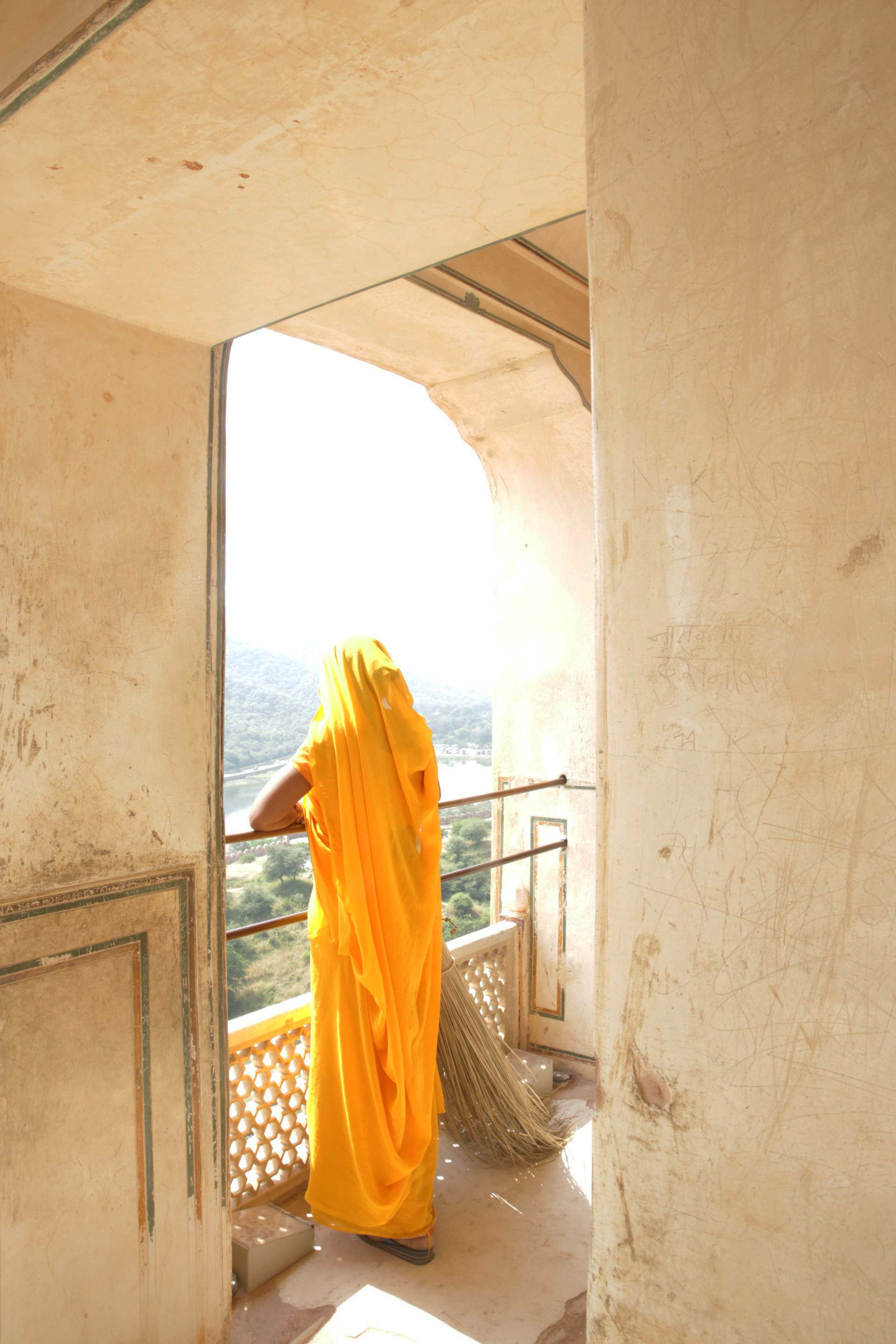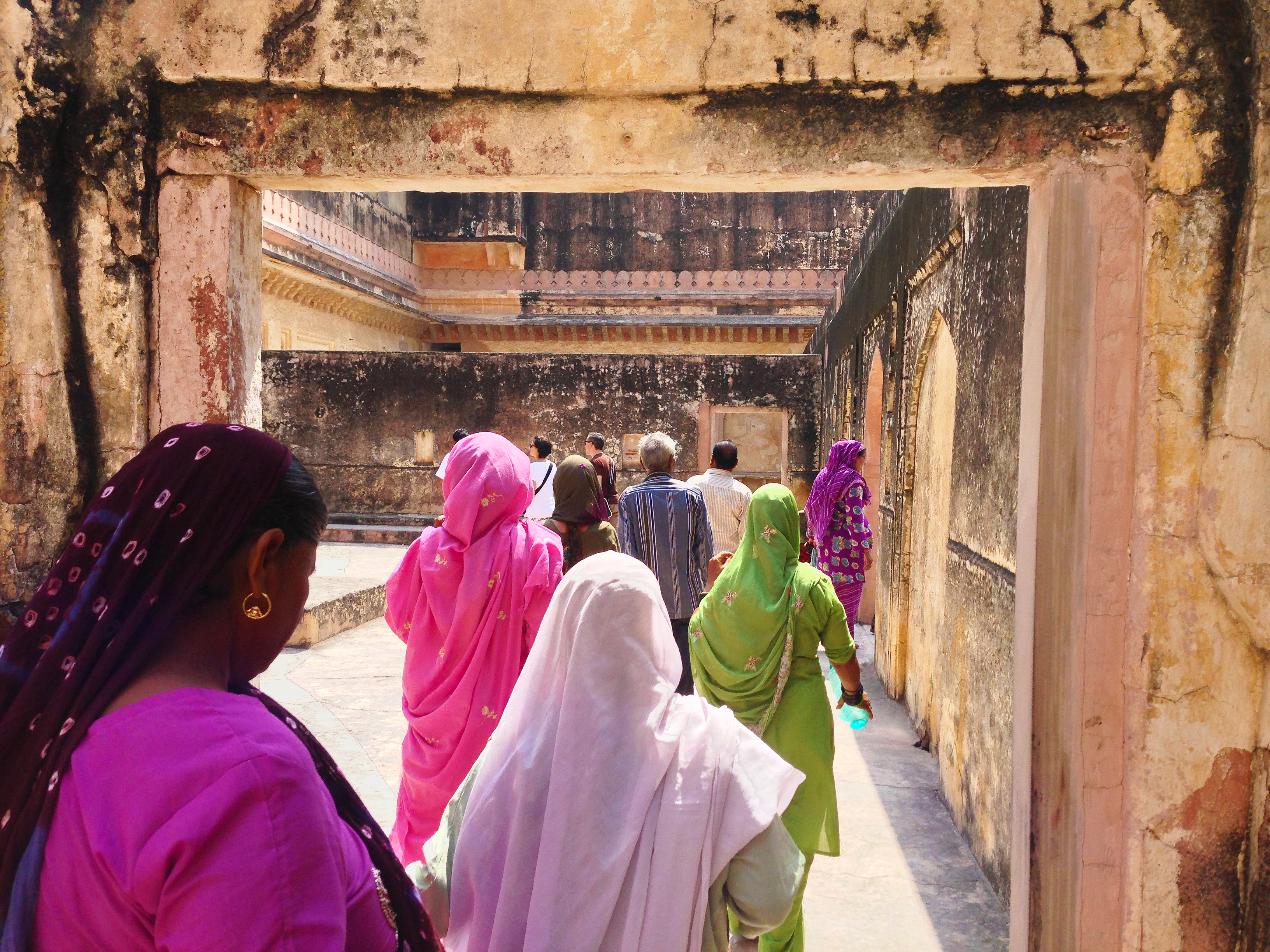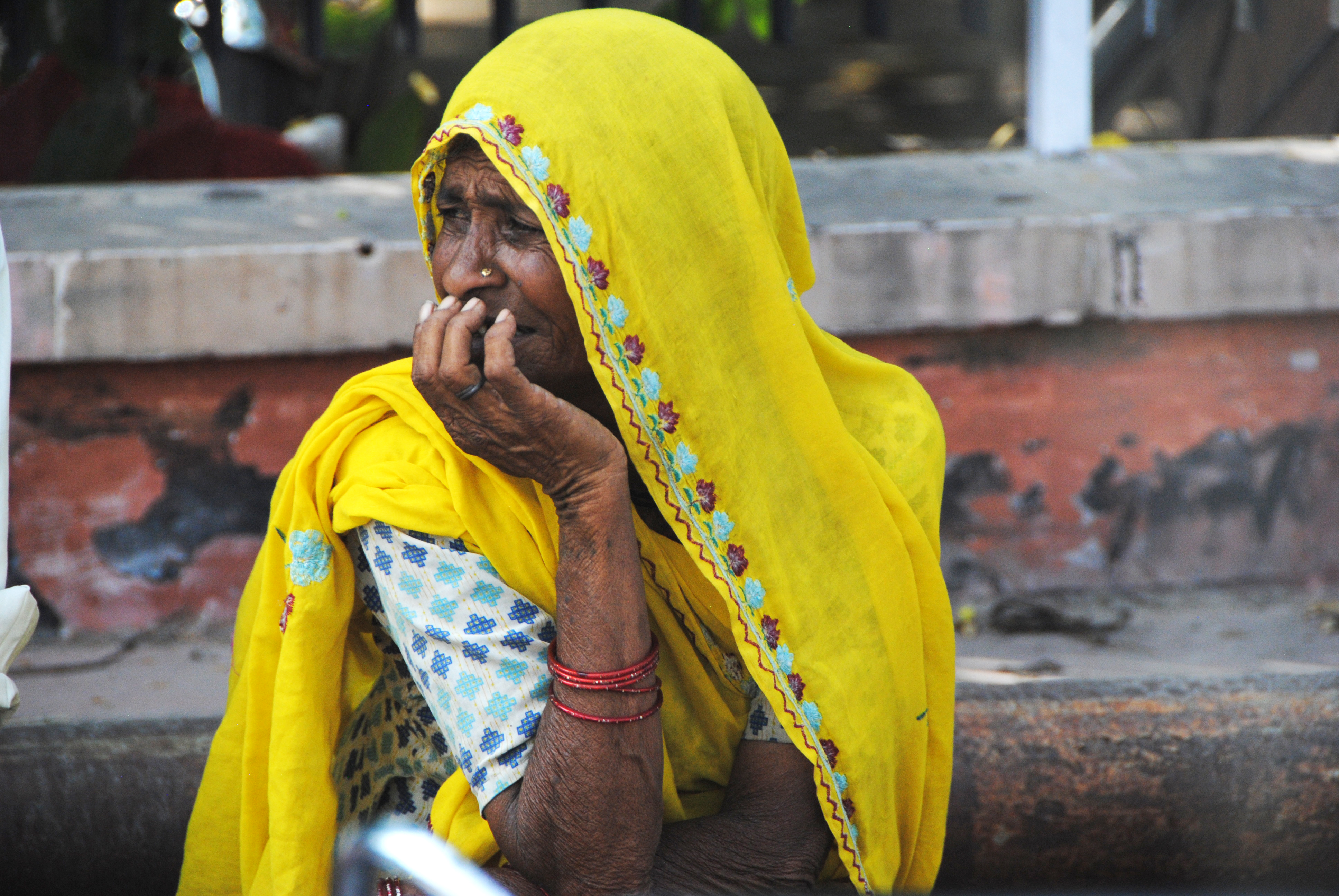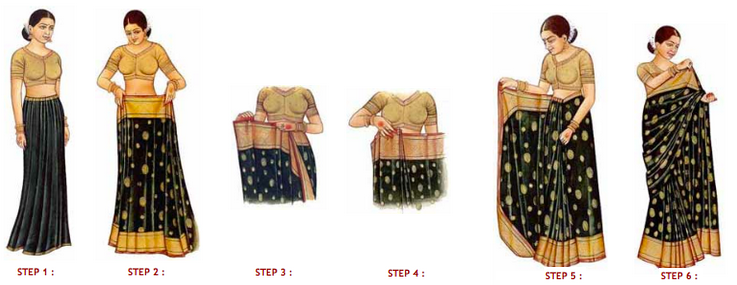 Everywhere we went in India, we passed women dressed in beautifully vibrant saris. You could not help but be in awe of their beauty, our pictures do not do them justice! We were very inspired by the colors and embroidery seen on the saris.
Everywhere we went in India, we passed women dressed in beautifully vibrant saris. You could not help but be in awe of their beauty, our pictures do not do them justice! We were very inspired by the colors and embroidery seen on the saris.

The sari (or saree) is a cotton or silk garment worn by women throughout India and other parts of Southeast Asia. A sari is commonly thought of as traditional dress, but even with western clothing being widely available in India, it is still the most popular outfit. Keeping up with the demands of changing times and trends, sari styles have evolved and changed, allowing for creative freedom.

Underneath a sari, many women wear a short sleeve blouse that is usually cropped to the midriff and also a long petticoat or bottom layer skirt. There are more than 80 different ways of wrapping a sari. The way of layering the fabric and the style of a sari differs by region and depends on the activity of the day. One of the most popular styles of wrapping the sari is called the Nivi style. Learn how to tie a sari and try it out for yourself!
 INSTRUCTIONS
INSTRUCTIONS
1. The Nivi drape starts with one end of the sari tucked into an underskirt at the waist.
2. The sari is then wrapped around the lower body once, from right to left.
3. Gather the sari into 6-7 even pleats of about 5 inches and tuck them into the skirt, just below the navel. These pleats give the sari feminine grace that can be compared to flower petals.
4. Once the pleats are in place, the sari is draped around once more over the right hip.
5. The loose end is then taken diagonally across the blouse on the upper body and draped over the shoulder.
6. The loose end that hangs over the shoulder is called a pallu. It can be left to hang down the shoulder in pleats or without.
7. Another variation is to wrap the pallu around and tuck it at your waist, drape it over your right shoulder, or cover your head with it.



